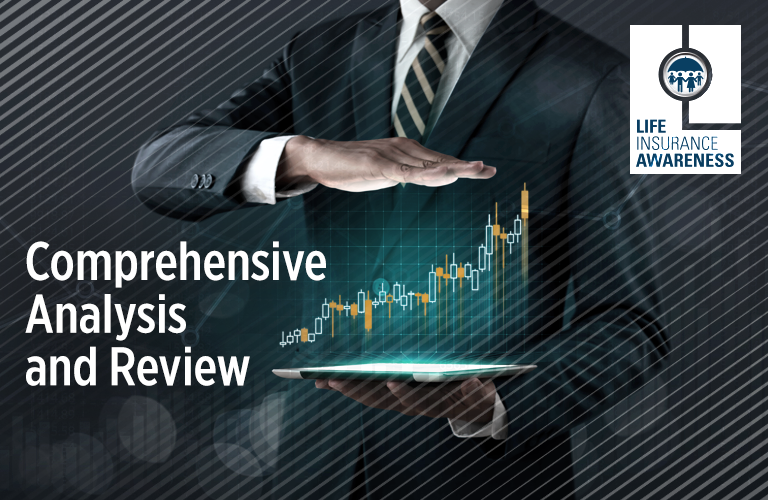Social media is a wonderful thing! That said, I never cease to be amazed at the power of public opinion and how influential places like Facebook groups can be in creating groupthink or slice-and-dice, digital pile-on criticism. If you’re a part of any community group, advisor forum, etc., you’ve probably seen the tremendous outpouring of assistance offered when a question is posed to the group at large.
Social can also be an incredibly helpful tool to help create awareness for product and services, too! Let me explain: Recently, I offered to help a fee-only financial advisor who was searching for assistance in reviewing an old variable universal life insurance policy (VUL) in a Facebook thread.
The Situation
The advisor reached out with mention of the premiums paid, death benefit, and the “upside down” nature of the cash value in pursuit of options for her client. She solicited the intention of replacement with some other financial products, broadcasting internal rate of return (IRR) and her product biases.
What didn’t surprise me was the outpouring of opinions surrounding VUL from the fee-based Facebook audience. But, I was alarmed that not a single advisor had mentioned the prudent work of reviewing in-force illustrations to understand the mechanics, forecast the longevity and guarantees, as well as discover benefits in her existing policy.
The conversation surrounded the client’s health and the need for insurance (which is a great place to begin the conversation). And yet, there were no questions posed to the advisor referencing cost of insurance charges, surrender charge periods, existing loans, current death benefit option, stress-testing performance, the age of the plans, or minimum/maximum funding strategies and opportunities. More important concerns were also overlooked, like items pertaining to the client’s bigger picture surrounding net worth, estate taxes/liquidity, and overall goals for the policy.
Fiduciary First
As I’m sure you’re aware, the word “fiduciary” is thrown around in our industry every day with the intention of posturing advice for the client’s best interests. When acting as a fiduciary, in some cases, replacement of existing insurance doesn’t always lead to the client’s best interests.
There are certain instances when minimally funding or skipping premiums on existing insurance dramatically enhances the IRR on cash value and death benefit. In other situations, when the client has an existing policy loan, it may not be advisable to repay the outstanding loan against cash value because of the policy’s life expectancy and guarantees.
At a minimum, financial advisors need to know how to best maximize the effectiveness of the client’s life insurance policies and the funding strategies that can maximize cash value accumulation and how that is dramatically different than funding that can maximize the IRR on the death benefit! Once an understanding of the existing policy is complete, then prudent measures should be taken to complete due diligence IF the existing policies should be replaced.
Comprehensive Analysis and Review
So much can be done to analyze existing insurance policies. For example, we have a dedicated program which offers a comprehensive analysis and review (CAR). This life insurance policy review leads to a full breakdown of the existing contracts, produces in-force illustrations, and provides notes to you, the advisor, that compile all that information. Then, you can present it to your clients, so they understand the nuances of their existing policy.
When we’re building policies for comparison, one of the resources we use is a program called EnSight. This software builds visuals to compare premium patterns like target funded, max-funded, and max-funded with increasing death benefit options that maximizes the IRR on both the cash value as well as the death benefit.
We also stress-test product recommendations to better combat objections regarding the “what-ifs” that arise in product-only solutions. Our dedicated resources do the work researching the existing policies, and analyzing the plans extensively, creating a survey to understand the existing insurance marketplace based on the objectives of the insured and advisor.
Living Benefits as Add-Ons
Another hot topic in policy review is the recent development of living benefits that come as add-ons to the life policies as a terminal, chronic or terminal illness benefit, or a premium rider for a long-term care (LTC) offering. Many of the existing life plans offer this level of “settlement options” for the insured, should they desire to use the policy to cover an unfunded healthcare expense.
To that end, doing what’s best for the insured as an objective-based agent/financial advisor should lead back to the insured/policy owner to best understand their circumstances. We’re here to help structure and add transparency to the financial investment of permanent life insurance so you can meet your client’s goals according to their risk profile.
For example, when the death benefit isn’t the driving need for the life insurance policy, existing cash value in life insurance policies sometimes could be better positioned into other fixed insurance products like asset-based LTC; or even repositioned into a fixed-indexed annuity (FIA) with LTC income enhancement. It’s best to monitor policies regularly because as your client ages, their risk tolerances, goals, needs, and health changes—leading to some incredible opportunities for you to add value.
Bottom line
There’s so much good that can come from a complete policy review for the benefit of your clients. Much more than what could be discussed on a social media thread due to all the details pertinent to your client’s unique situation.

